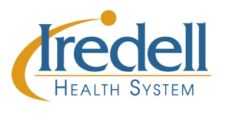
BY DEBBIE PAGE
debbiepage.iredellfreenews@gmail.com
Iredell Health System President and CEO John Green participated in the North Carolina Healthcare Association’s “It Takes A Hospital” virtual town hall on Tuesday to discuss the impacts of COVID-19 on hospitals as well as the challenges that will remain for the industry after the pandemic ends.

Green represented the rural healthcare perspective in the event, which also featured Atrium Healthcare’s CEO and President Gene Woods and Novant President and CEO Carl Amato, who spoke about urban approaches and obstacles.
Speaking about the recent rise in cases, Green noted that rural areas are now outpacing urban areas in new cases of corona virus. “If you go back to March, the first affected areas were large urban mass areas.”
“I think that gave a little bit of a confidence to folks in a smaller community, it can’t happen here, it can’t happen to me.”
“You also didn’t have the number of visible reminders. In a smaller community, you feel like you’re in a bubble because you have a smaller number of people and less people you don’t know.”
“What we’ve found is that’s not what prevents it. It can be somebody you know, parts of your family. It can spread so quickly and so easily. That’s one of the components we’ve seen.”
Green also noted the weight of nine months of lockdowns and restrictions has resulted in “pandemic fatigue.”
“What we’re seeing is individuals who are saying, ‘I’ve been good so much of the time, but I just need a day off. I just need to take this mask off or take a little break.’ Every time we see that, that’s when we’re seeing hot spots come up in our community.”
INNOVATIONS
Speaking of healthcare innovations emerging because of the pandemic, Woods mentioned virtual visits, virtual hospital at home, and increased analytic capabilities to determine and predict needs.
Amato also touted virtual visits, partnerships with tech companies to deploy health monitoring tools into homes, and a sophisticated analytic dashboard to track data to prepare for future cases.
He also said Novant’s COVID-19 chat bot performed thousands of virtual screenings, and the system participated in clinical trials of emerging drug therapies to treat the virus.
Teamwork within Novant and across the state was also essential to meet the challenges of the pandemic and to innovate to meet the unprecedented demands on the healthcare system, noted Amato.
Green said that IHS did many similar things as the two larger systems but on a different scale. “One of the biggest things was having to learn ridiculous flexibility.”
Green said the best decision on Monday could look quite different on Wednesday and change again on Friday once more information was acquired about the virus.
“The crazy thing that all three of those decisions were right at the time, based on the knowledge we had and where we were in the pandemic,” he said.
Being able to make decisions quickly and communicating them were essential to patient care, Green added.
Regardless of the size of the organization, Green said “over-communication” was key to making sure his staff was up-to-date and ensuring the best patient care.
IHS had looked at expanding using technology and virtual care prior to the pandemic, but it has not proceeded to implement these tools “because people were comfortable. This was the impetus. This pushed us over the edge. It got our physicians more comfortable, it got our patients more comfortable, and it got our computer systems ready for it.”
“I think those are huge differences for us, so now our goal is to take that telehealth and keep it moving forward as another part in our arsenal because it’s a great success story. Especially in a rural area, it’s not always easy to get to the doctor, so it’s another opportunity.”
Green also mentioned that IHS began using home health monitoring tools as well. “We were able to use that with our northern Iredell and Alexander county residents, and that’s helped keep people where they can be safe, but we’re taking great care of them.”
SUPPORTING STAFF
Both Woods and Amato said that their systems were worried about their tired staffs and were supporting them with funds, childcare, overnight accommodations, and counseling to promote resiliency and to prevent burnout.
Green said that IHS continues to supporting staff with open communication and education through an intranet site that gave staff access to updates and information at their convenience. They created a “COVID Coping” program utilizing the hospital chaplain to help staff with the stresses of caring for patients in the pandemic.
The system gave staff who tested positive paid furloughs to recover. IHS also issued disaster relief checks to take away financial stresses on staff’s families.
Green said that are constantly discussing ways to increase morale and keep staff in the best frame of mind in the midst of the pandemic.
“Anything unique, crazy — tell us! Let us try to do it. Right now we need anything because people are tired, and we need anything we can do to keep them moving.”
HEALTHCARE DISPARITIES
Healthcare disparities have become even more obvious during the pandemic, and the three CEOs are all concerned with reaching out to underserved communities. Woods said that people of color have six times the COVID-19 death rate of whites.
Green said that even though IHS had a more rural service area and fewer people, the proportion of underserved residents was similar to urban areas.
“We’re a more ‘boots on the ground’ concept because that’s what we have ability and skill set to do.” The system uses clinics in North Iredell, Statesville, and Troutman, and its coming facility in Mooresville, to better reach people right in their communities.
Collaborating with churches, YMCAs, and community organizations and listening to the community needs will help IHS build better outreach to these populations and create healthcare equity, especially in getting people to trust in the coming vaccine program.
Green also wants to learn from the data and analytics from larger systems like Atrium and Novant since the problems IHS faces are similar. “It is the same research. It’s a long-term need for everyone, and as we work toward need, we will see an improvement in the health equities across all our organizations.”
VACCINES AND MASKS
The panel also discussed the coming vaccine distribution, which will at first focus on healthcare workers and the elderly living in congregate living settings. Wider distribution to the general population is expected by the spring.
Concerns about side effects, which are mild, and the speed of its development may cause some to have hesitation to get the vaccine.
Novant infectious disease specialist Dr. David Priest said that the vaccine’s mRNA technology, on which the Phizer and Moderna vaccines are based, has been around for years. The mRNA technology is also being used to develop treatments for cancer.
An mRNA vaccine teaches cells how to make a protein that triggers an immune system response, rather than injecting live or dead virus material, so the vaccine cannot make a person sick from the COVID-19 virus. It just teaches the body to fight it.
Priest said educating physicians and the public about the vaccines’ safety and how they work is important to get widespread willingness to receive the vaccine.”We need to engage communities that might have hesitancy or trust issues,” he said.
Until the vaccine is widely available, wearing masks is essential to protect people’s health and avoid overrunning the health system. Green said IHS’s 1,700 employees are leading by example by wearing masks at work and in their daily lives.
Green said that they must reach out to different communities to promote wearing masks in ways that will appeal to a specific group because each has different histories, situations, and perspectives. He acknowledged, however, that they will not win over 100 percent of folks to mask compliance.
GREATEST CHALLENGES AHEAD
After the COVID-19 pandemic is over, healthcare still faces a number of challenges. Green said that the total expense of healthcare, now at 19 percent of gross domestic product, is too expensive and out of control.
“We are the second most expensive thing after someone’s mortgage.”
“How do we fix this? It’s not going to be the health systems fixing it. It’s going to have to be an industry- wide solution. We have to look at providers, pharma, and suppliers, and build a new system that will bring the overall cost structure down.”
He said that cutting costs is not the only answer. Improving social determinants (safe housing, healthy food, mental healthcare, jobs and economic security) to have healthier people is essential to bring healthcare costs down.
Green also spoke about the mental health crisis that is intertwined with a person’s overall health status. Though they have been somewhat overshadowed by the pandemic, mental health concerns are a big component of the pandemic among those with social determinant gaps.
Amato agreed that achieving healthcare equity required providers to see the person behind the patient, including how many jobs they work, where they live, their family support system, and diet, to help people get the healthcare they deserve.
Woods advocated for Medicaid expansion to improve the healthcare of children, the disabled, veterans, and others in need of improved healthcare access. Lost jobs and the ensuing loss of insurance coverage further decreased access to care during the pandemic.



